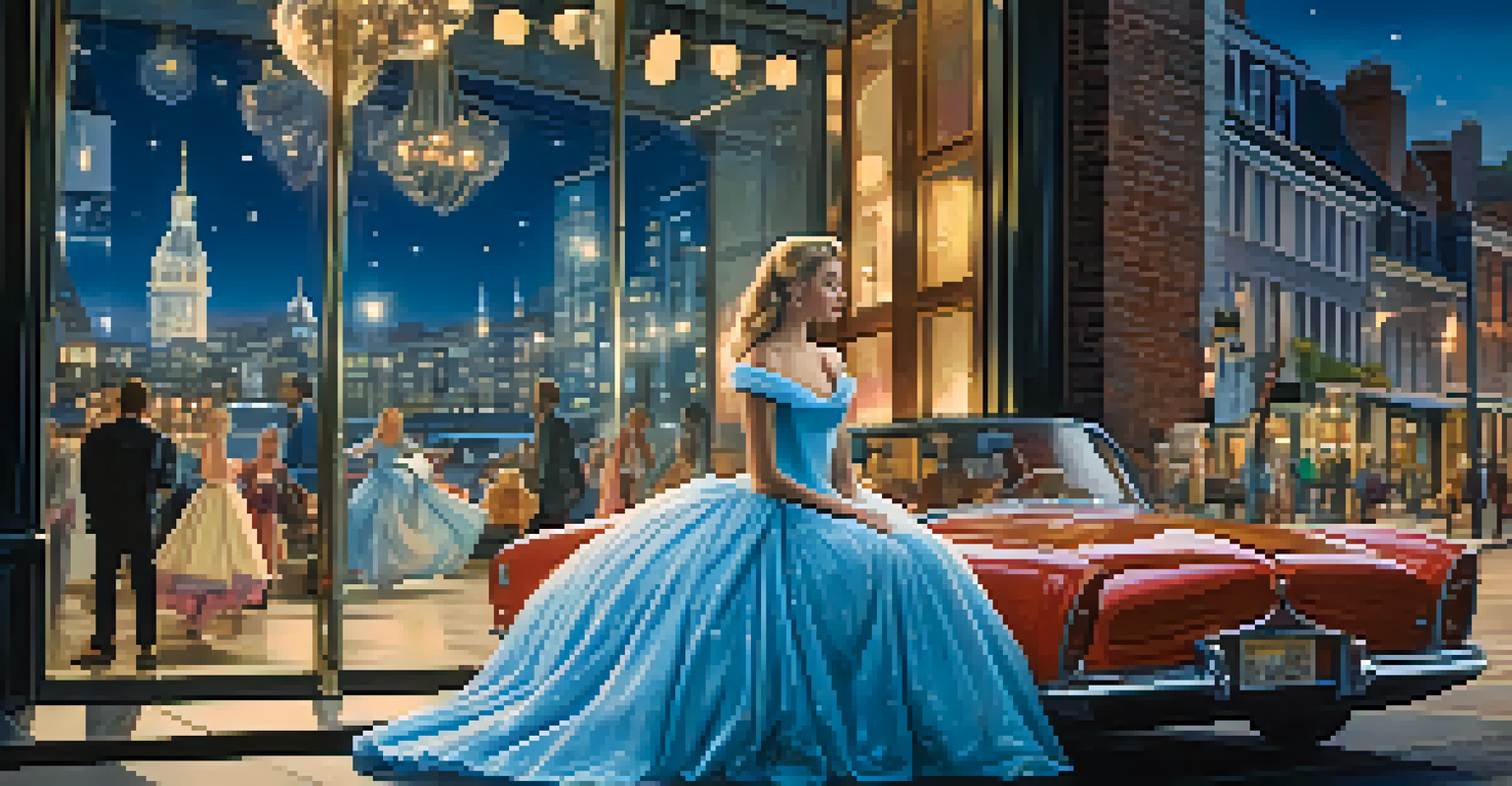Folklore in Literature: The Artistic Transformation of Tales

Understanding the Essence of Folklore
Folklore consists of traditional beliefs, customs, and stories passed down through generations. These narratives often reflect the values and experiences of a culture, making them rich sources of inspiration for writers. By tapping into folklore, authors can connect with readers on a deeper level, evoking shared memories and emotions.
Folklore is the history of the people's imagination, and it is the archive of their emotional life.
At its core, folklore serves as a cultural touchstone, providing insight into the identity and history of a community. It often includes various forms, such as myths, legends, fables, and fairy tales, each with its unique characteristics. This diversity allows literature to draw from a vast pool of themes and motifs, enabling creative reinterpretations.
As we delve into literature, we see how folklore not only preserves cultural heritage but also adapts to contemporary contexts. This transformation keeps the tales alive, ensuring they resonate with modern audiences while retaining their original essence.
The Artistic Transformation of Folklore
Artistic transformation refers to the process of reimagining folklore in new and innovative ways. Authors often take familiar tales and infuse them with fresh perspectives, characters, and settings. This not only revitalizes the stories but also invites readers to engage with them in unexpected ways.

For instance, the classic tale of Cinderella has seen countless adaptations, from the traditional fairy tale to modern retellings that explore themes like feminism and self-empowerment. Each version offers a unique lens through which to view the original story, highlighting how folklore can evolve while still honoring its roots.
Folklore Shapes Cultural Identity
Folklore plays a vital role in literature by highlighting cultural values and fostering a sense of belonging among readers.
Such transformations allow folklore to transcend time and place, making it relevant for diverse audiences. By reinterpreting these tales, writers breathe new life into age-old narratives, proving that folklore is not static but a dynamic part of literary expression.
Symbolism and Themes in Folklore
Folklore is rich in symbolism and themes that resonate across cultures. Many tales explore universal concepts such as love, courage, and the struggle between good and evil. These timeless themes make folklore a powerful tool for writers seeking to convey complex ideas in relatable ways.
Stories are the most powerful way to communicate ideas. They connect us to others, to our past, and to our future.
For example, the motif of the 'hero's journey' is prevalent in many folktales, where the protagonist faces challenges that lead to growth and self-discovery. This archetype is not only captivating for readers but also serves as a blueprint for character development in literature.
By weaving these symbols and themes into their narratives, authors can create deeper connections with their audience. Readers often find comfort and familiarity in these elements, which enhances their engagement with the story.
Folklore’s Influence on Character Development
Characters in folklore often embody archetypes that resonate with readers. These archetypes, such as the wise old man or the innocent maiden, serve as relatable figures that drive the narrative forward. When authors draw from folklore, they can create characters that feel both familiar and compelling.
Take, for instance, the character of the trickster, prevalent in many cultures' folklore. This character challenges the status quo, often using wit and cunning to navigate their world. By incorporating such figures, authors introduce complexity and depth, inviting readers to explore moral ambiguities.
Artistic Transformation Revives Tales
Modern adaptations of folklore infuse traditional stories with contemporary themes, ensuring their relevance for new generations.
Furthermore, folklore allows for the exploration of character transformation, as many tales illustrate how individuals can change through their experiences. This journey resonates with readers, mirroring their own growth and challenges.
Folklore and Cultural Identity in Literature
Folklore plays a crucial role in shaping cultural identity, and this is vividly reflected in literature. Writers often incorporate elements of their heritage, using folklore to highlight cultural values, traditions, and experiences. This not only enriches the narrative but also fosters a sense of belonging among readers.
For instance, works by authors like Chinua Achebe and Gabriel García Márquez weave folklore into their storytelling, grounding their narratives in their cultural contexts. By doing so, they preserve the essence of their heritage while addressing contemporary issues.
This connection to cultural identity allows readers to engage with stories on a personal level, offering insights into different ways of life. It encourages empathy and understanding, bridging gaps between diverse cultures through the universal language of storytelling.
Modern Adaptations and Retellings of Folklore
In today's literary landscape, modern adaptations of folklore are more popular than ever. Authors are reimagining classic tales to address contemporary issues, often with a twist that surprises readers. This trend not only showcases the versatility of folklore but also demonstrates its relevance in today’s society.
Take the recent wave of young adult novels that rework traditional fairy tales into stories featuring strong, independent protagonists. Titles like 'Queen of Snow' and 'A Curse So Dark and Lonely' breathe new life into old tales, making them relatable to a new generation of readers.
Symbolism Connects Readers to Themes
Folklore is rich with universal symbols and themes that resonate across cultures, allowing writers to convey complex ideas in relatable ways.
These adaptations often spark discussions about societal norms and values, creating a dialogue between the past and the present. By blending folklore with modern themes, authors ensure that these timeless tales continue to captivate and inspire.
The Enduring Legacy of Folklore in Literature
The legacy of folklore in literature is enduring and multifaceted. It serves not only as a source of inspiration for writers but also as a means of cultural preservation. As new generations of authors draw from folklore, they contribute to a rich tapestry of storytelling that spans cultures and time periods.
By embracing and adapting these tales, literature continues to evolve, reflecting the shifting values and experiences of society. Folklore’s adaptability ensures that it remains relevant, allowing it to resonate with audiences across various contexts.

Ultimately, the artistic transformation of folklore enriches literature, making it a vibrant and dynamic field. As we explore these timeless tales, we celebrate the creativity and imagination that keep folklore alive, ensuring its place in the literary canon for years to come.